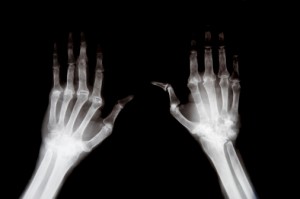Out of Touch (Part 4)
By Asher Crispe: June 7, 2012: Category Decoding the Tradition, Inspirations
A Phenomenology of Involvement without Interference in the Rabbinic and Philosophic Traditions
Skin
—The idea of touching and not touching is an action that relates itself to the garment.
Moshe Cordovero (29)
 Is not the body the primary garment of the soul? Can we touch the soul directly without the body? Perhaps in the sense of feeling “touched” in our hearts, where touching someone in a spiritual sense comes across as inspiration: “you moved me!” As the garment of the soul, the body possesses its own garment in the form of the skin. So seductive is the skin that it threatens to blind us. This analogy stems from the verse that prohibits placing a stumbling block before the blind. Alluded to in the word for the blind עִוֵּר [ivair] is the root of the blindness, עוֹר, [ohr] meaning skin. Unvocalized, the words appear identical. The ambiguity of these terms implies that skin itself is the stumbling block that blinds people to the inner person being perceived. Alternatively, seeing skin is a symptom of spiritual blindness. (30)
Is not the body the primary garment of the soul? Can we touch the soul directly without the body? Perhaps in the sense of feeling “touched” in our hearts, where touching someone in a spiritual sense comes across as inspiration: “you moved me!” As the garment of the soul, the body possesses its own garment in the form of the skin. So seductive is the skin that it threatens to blind us. This analogy stems from the verse that prohibits placing a stumbling block before the blind. Alluded to in the word for the blind עִוֵּר [ivair] is the root of the blindness, עוֹר, [ohr] meaning skin. Unvocalized, the words appear identical. The ambiguity of these terms implies that skin itself is the stumbling block that blinds people to the inner person being perceived. Alternatively, seeing skin is a symptom of spiritual blindness. (30)
The skin denies access to the inner person, effectively shutting us out. We have stumbled on the superficial. As Theodor Adorno testifies: “Everything is to be at the service of the hand that grasps it, but the grasping hand regresses to the repetition of what is available, which is not actually that at all.” (31) Even the surety of solid objects that sell themselves as availability masks the sobering realization that what was sought slipped through my fingers.
Moreover, as David Michael Levin comments on Adorno: “Bourgeois tact is reified social reality captured in the lie of commodified appearances.” (32) But this lie once exposed travels with strange paradoxes as Levin continues:
Bourgeois tact is obsessed with superficialities. With keeping up appearances; and yet, ironically, and indeed paradoxically, precisely because of this concern for “exterior life,” it fashions an inner life—a private dimension of the individual that it constitutes as absolutely untouchable and indestructible. Tact thus becomes a demonstration of respect for the other’s inwardness, an inwardness that cannot, and must not, be touched: observing the conventions of distance, tact becomes a way of touching the untouchable “being” of the other without touching it, without violating its untouchability. (33)
Skin that hardens the inside/outside distinction engenders the following conceptual knot: when what is touched is only the outside then the inside is left in-tact. When the inside is touched, then the outside is left in-tact. To be left in-tact may prove itself an unresolvable puzzle as we are swallowed in the ambiguity of touching and not touching collapsing into each other. The old logic and its divisions has worn thin. We continue to wear it all the while knowing that it is riddled with tears.
Levin, whose masterful study on the Gestures of Ethical Life, collects a wide spectrum of voices with whom he is well familiar and capable of expanding upon. In the chapter on “Levinasian Gestures” he articulates Levinas’ sense of “proximity” as follows:
The flesh of the other withdraws from our approach—withdraws into the untouchable dimension, the infinitude, of its ethical existence. Even when I grasp the other’s hand, there is a sense in which that hand remains ungrasped and, indeed, ungraspable. In the spatiality of the ethical relation, our gestures take place in a condition of betweenness: between the approachable and the unapproachable, between the touchable and the untouchable, between what can be grasped and what is forever beyond the possibility of our grasp. (34)
Consistent throughout his work, Levin decorates his text with illuminating quotes such as this snippet fished out of Levinas essay “Language and Proximity”:
In proximity skin is neither a container nor the protection of an organism, nor purely and simply the surface of a being, but nudity, presence abandoned by a departure, exposed to everyone and then too unfaithful to itself, insolvent, yet also delivered over to things, contaminated, profaned, persecuted, in fault and in distress. (35)
Levin also quotes Derrida, making good use of the following remark from Derrida’s first essay on Levinas “Violence and Metaphysics”:
Doubtless this encounter, which for the first time does not take the form of an intuitive contact (in ethics, in the sense given to it by Levinas, the principal, central prohibition is that of contact) but the form of a separation (encounter as separation, another rupture of “formal logic”). (36)
It would seem that these diverse thinkers hold to at least some consensus on the issue of touch. They seem to all be screaming, in one form or another, what Levin himself builds as a conclusion that strongly reiterates the opinion of his predecessors, namely that:
In the moment of contact, there is no touch! For, while mere contact is always a superficial relation, often indifferent, a gesture typically of the instant, touching is always a gesture of deeper commitment, greater extension, and longer duration. Moreover, unlike mere contact, touching a person is a gesture that always bears within it ethical implications—and an inherently ethical potentiality. (37)
 Considered in light of our prior association of blindness and skin that links vision and touch and implicates them in the same conspiracy, we welcome Levin’s assertion that: “The synesthesia that entangles the touch in the “madness” of vision constitutes a serious challenge: there is also a certain kinship that, for Levinas, tempts the touch to move with the aggression and violence that vision encourages: contact, he says, is, like vision, a “forgetting” of the infinite.” (38) Driving the point still further, Levin then quotes from Levinas’ essay “Diachrony and Representation” with noticeable interpolations into Richard Cohen’s original translation:
Considered in light of our prior association of blindness and skin that links vision and touch and implicates them in the same conspiracy, we welcome Levin’s assertion that: “The synesthesia that entangles the touch in the “madness” of vision constitutes a serious challenge: there is also a certain kinship that, for Levinas, tempts the touch to move with the aggression and violence that vision encourages: contact, he says, is, like vision, a “forgetting” of the infinite.” (38) Driving the point still further, Levin then quotes from Levinas’ essay “Diachrony and Representation” with noticeable interpolations into Richard Cohen’s original translation:
Seeing and knowing, or taking in hand, are tied together in the structure of intentionality, It remains the intrigue of thought that recognizes itself in consciousness: the “now” [main-tenance] of the present [imposed and maintained by la main, the hand,] emphasizes immanence as the very excellence of this thought. (39)
Might we ask if the “structure of intentionality” will ever make peace with inherently ethical potentiality? The duplicitous character of the handshake, at once ethical and erotic, inviolable and violent must remain hovering in indecision.
29 See Or Yakar Bereshit Sha’ar III section 2 page 122a: “וענין מטי ולא מטי היא הפעולה המתייחסת אל הלבוש”.
30 This comparison and re-reading of the verse from Leviticus 19:14 “לפני עור לא תתן מכשול” [Do not place a stumbling block before the blind (ivair)] also stems from Rabbi Ginsburg’s essay איסור נגיעה ותיקונו p.4. There he goes on to draw out the relationship between blindness of sight with blindness of touch when either of them only encounters skin.
31 Aesthetic Theory. P.206.
32 Gestures of Ethical Life. P.111.
33 Ibid. p.128.
34 P.354.
35 “Language and Proximity” p.121. in the Collected Philosophical Papers volume of Levinas’ work.
36 “Violence and Metaphysics” p.95 in Writing and Difference.
37 Gestures. p.355.
38 Ibid. p.357.
39 “Diachrony and Representation” p. 99 in the volume Time and the Other. Also, see Gestures p.357.
http://www.interinclusion.org/inspirations/out-of-touch-part-5/























;)
;)
;)
;)
;)
;)
;)
;)
;)
;)
